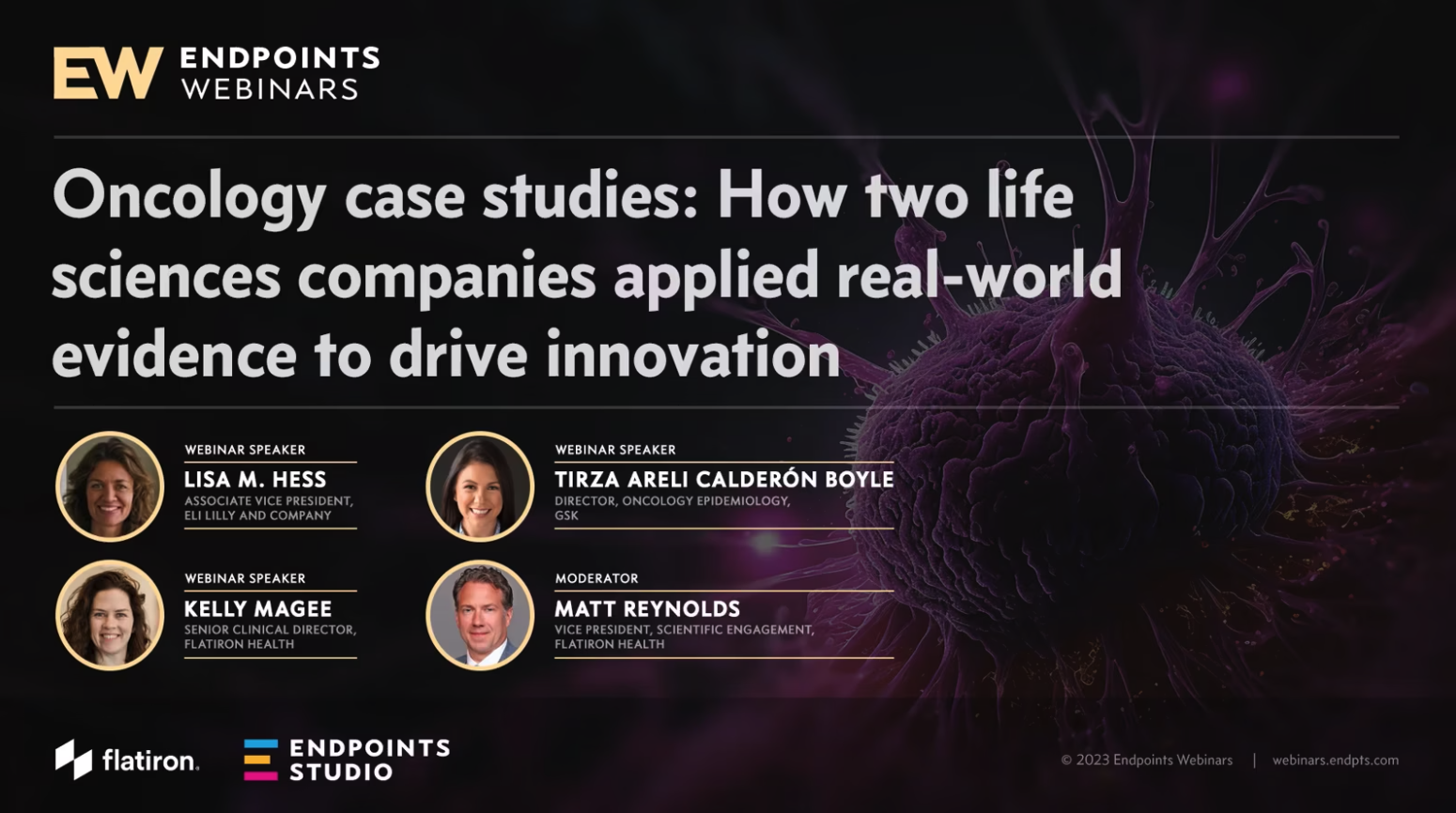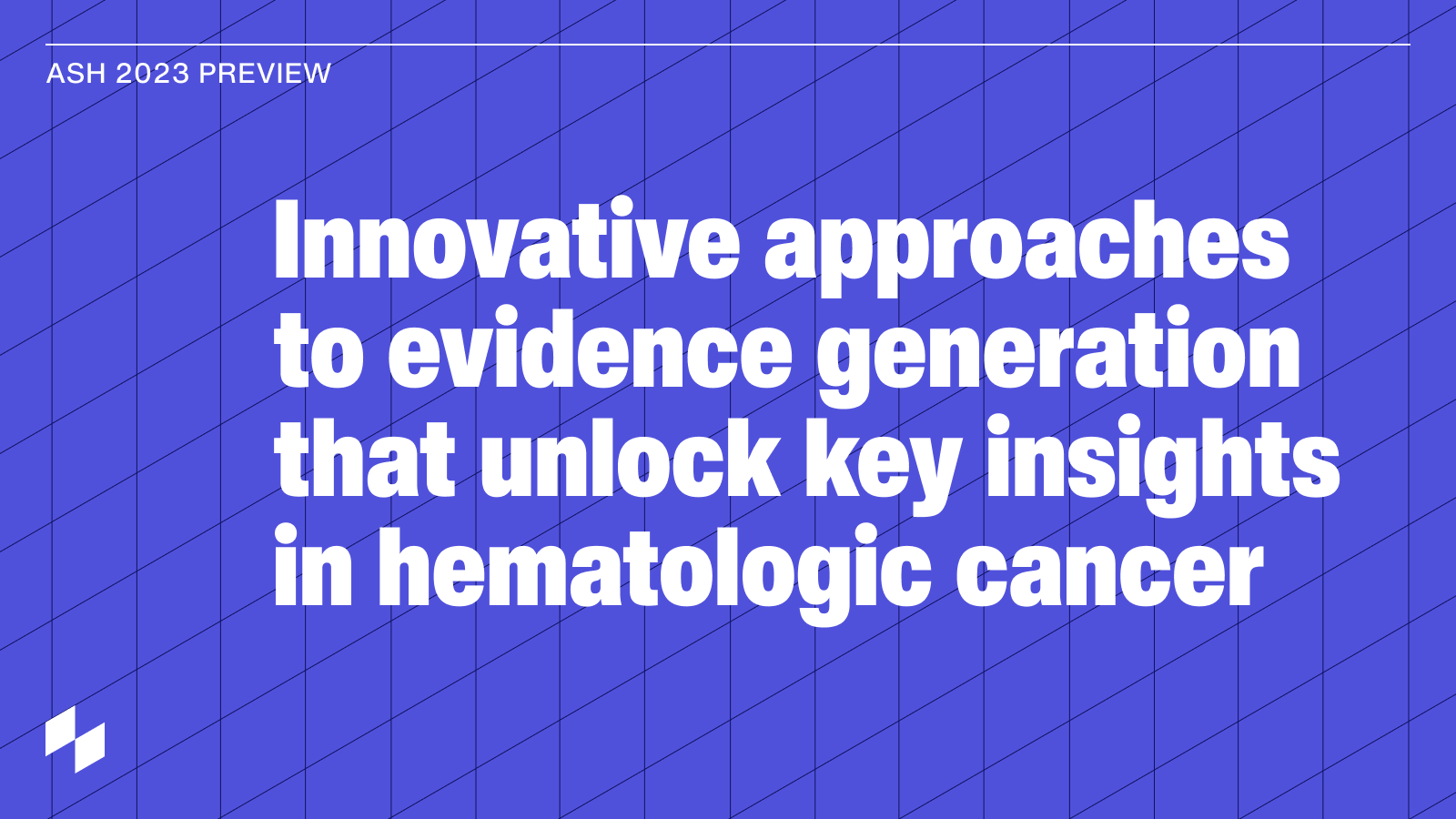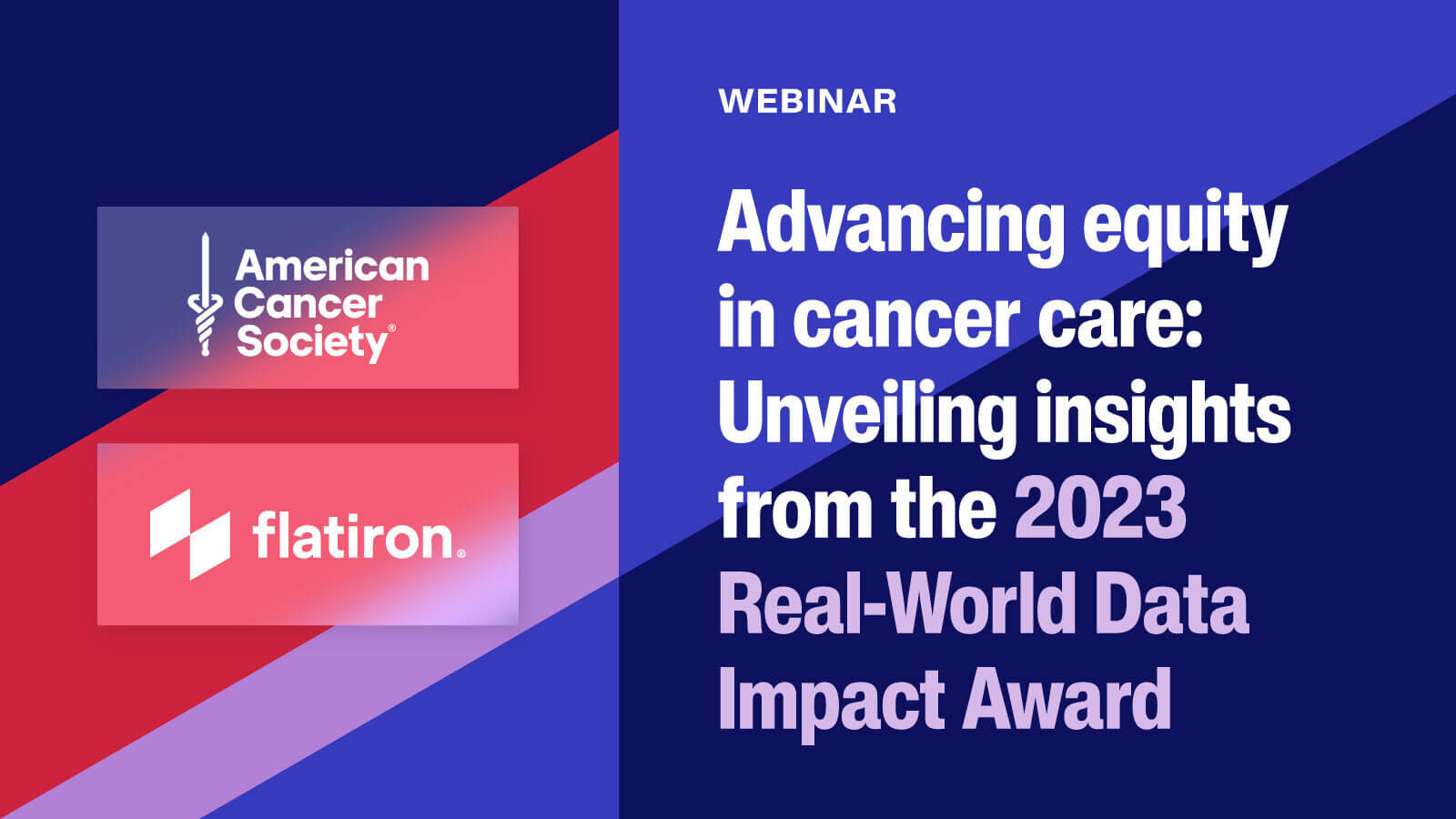This talk is part of the ResearchX session: Applying RWE to Regulatory Applications.
Sections include:
- Integrating Clinical & Genomics Real World Data to Support New Drug Application
- Postmarket Real World Data Perspectives: IBRANCE (palbociclib) Males Case
- Kadcyla (T-DM1) in HER2+ mBC Label Update on LVEF following a post approval commitment – based on RWD
- Getting Real: Real World Evidence in Oncology Drug Approvals

Transcript
Chana Weinstock: Thank you so much, Jillian. Good afternoon, my name is Chana Weinstock, and I'm a medical oncologist at FDA. Thanks so much to the previous speakers for their talk, and for outlining three very interesting case examples of regulatory submissions that included real-world evidence. Obviously, from FDA's end of things, this is a very big topic, and I certainly won't have time to do it justice in this brief talk, but I did want to touch on our current thinking on the topic. Instead of repeating the examples already discussed, I want to talk about some other directions that real-world evidence could take in a regulatory setting.
Thank you very much to the panelists and participants for joining today, and to Flatiron for inviting me to speak. Let's get real about real-world evidence and oncology drug approval. Next slide, please. So, I have no disclosures, and the opinions stated are my own. First, I'll be talking about the rationale behind the use of real-world evidence in a regulatory setting, some strengths and limitations, then I'll talk a bit about the use of external control arms in clinical trials. I'll touch on ongoing research in this area, and I'll briefly discuss COVID-19 and lessons to be learned from the pandemic experience. Next slide, please.
To begin with, why is it that we're so interested in the topic of real-world evidence at FDA? Well, to start with, it's because we have a congressional mandate from the 21st Century Cures Act that requires FDA to develop a framework and to issue guidance regarding use of real-world evidence in the regulatory setting. The PDUFA reauthorization builds on this requirement. So, there's a congressional mandate to think about and to develop a plan for how we deal with this topic. Next slide, please.
There are many potential advantages of real-world data, and to me, one of the most important is that there are many patients whose experiences are not captured in the context of a clinical trial. In addition to limitations of inclusion and exclusion criteria and geographic enrollment restrictions, there's the fact that a very small percentage of adult patients overall enroll on cancer clinical trials. So, real-world evidence has the potential to provide inclusivity by virtue of being more reflective and representative of the population who will use the drug after it's approved.
Additionally, real-world evidence has the potential to provide information on rare cancers. Next slide, please.
So, to back up and think about the rationale for inclusion of real-world data and approving drugs or biologic products or cancer indication. In my mind, I conceptualize this as a pyramidal structure in which there's clinical trial data generated by patients who've enrolled in clinical trials. A portion of those patients' experiences including efficacy and safety information can be captured and submitted to FDA for review and will subsequently be used in drug approval. Next slide.
However, if fewer than 5% of adult patients with cancer receive their care in the context of a clinical trial there's an enormous amount of potential data that exists regarding patients whose experiences may not be captured in the context of a clinical trial. Much of this real-world data exists in electronic form. It's been captured electronically, through as we've seen examples of electronic records, through insurance claims data, other billings data, et cetera. However, the question of whether this data is suitable to be used as evidence for regulatory approvals is very pertinent. Next slide, please.
So, let's talk about some of the potential challenges to use of real-world data. A lot of this has been covered already, so let's specifically use the example of electronic health records, EHR. On the one hand, almost every oncology patient treated today has EHR data recorded, which represents a relatively granular clinical picture of the patient experience. The challenges include the fact that data in pathology, radiology, and clinical notes are often unstructured. The way these data are captured through typing does not necessarily equal consistency and complete documentation. And very importantly clinical outcome measures for drug approvals may not be used or consistently recorded in practice. That makes using these data quite challenging in a regulatory context. Next slide, please.
As I said previously, the case studies and examples you heard prior to my talk discuss using real-world evidence to complement an approval done primarily based on clinical trial data. Highlighting some of the experiences that we had using that approach to the use of real-world evidence in recent years. What if we go a step further and talk about potentially using real-world evidence in the setting of an external control arm built into a trial itself. This was also an approach we've been asked about many times and had discussions about in various contexts.
Let's talk about the rationale for doing this sort of trial. In a conventional clinical trial, for example, the trial in the schema shown above, you might take 600 patients eligible for your trial, and randomize them to the experimental versus the control arm in a 1:1 ratio. Next slide, please. In a trial with an external control arm, you'd essentially only be conducting a single-arm trial with all trial patients on the experimental arm, and control data came from another setting on patients outside that clinical trial.
Your protocol and statistical analysis plan would prespecify the source of the external control data and obviously would specify how the analysis of this data would occur. This sort of trial design has never to date been used in a cancer drug approval, and that's because there are major concerns with this approach despite the advantages it might appear to offer in terms of patient numbers required for treatment. Next slide.
So, what are the potential problems with using an external source of data for a clinical trial like I've proposed? First, in terms of using real-world evidence as the source of the control arm data, one major problem is that patients with cancer treated on a clinical trial when matched and compared to those not treated on trials have actually been shown to live longer, just simply by virtue of being trial patients. This may implicitly bias the trials in favor of the experimental arm.
In general, randomization addresses the unquantifiable differences in a way that propensity score matching or other statistical methods cannot. There may be certain populations that are inherently less heterogeneous for whom external controls may be somewhat less problematic. For example, patients with molecularly defined tumor. However, I will again emphasize that no FDA approvals in oncology to date have relied on external control designs due in part to these issues. Next slide, please.
FDA has ongoing interest in this topic, and the Oncology Center of Excellence has published extensively related to real-world evidence. Here's one example of how we've contributed to the discussion, and that's our look at pragmatic trial endpoints. By looking back at the large collection of trial data we have at FDA from applications that have been submitted for review. By providing an aggregate look at that data, we can get a sense of how some endpoints that might be more easily captured in a real-world setting actually played out in a large collection of trial patients for whom data was carefully collected in the setting of the trial.
We retrospectively analyzed pragmatic clinical trials and points that lend themselves to the real-world setting. For example, time to treatment discontinuation. We looked at how these correlate with PFS and OS. These analyses were conducted in non-small cell lung cancer, renal cell carcinoma, and are ongoing, and hopefully, contribute to the discussion and understanding of these pragmatic trial endpoints. Next slide, please.
I'm also going to highlight Project Switch, which was an effort by my FDA colleagues to look at randomized clinical trials in several disease areas in which a later trial used a control arm that was the experimental treatment of an earlier trial. Or a control treatment for an earlier trial for the same patient population. The goals of this analysis was to compare the earlier trial arm as an external control to a later control experimental arm using statistical methods to control for bias.
The results of this analysis demonstrated that in some cases, external and concurrent controls were similar in effect size due to very specific biomarker selection and first-line treatment. This was not the case in more heterogeneous populations. Next slide, please.
So, just a parting thought. As you know, we're in the midst of a global pandemic, which has and will have many implications on all aspects of life as we know it, including on the conduct of clinical trials. Long before COVID, there was a call to make trials more patient-friendly by decentralizing clinical trials, and by bringing trial assessments to where patients live taking advantage of digital health technology. By necessity, we're deploying aspects of decentralized trial and exploring real-world data to respond to the COVID-19 pandemic.
So, what can we learn? It would be a shame to have this grand experiment pass us by and for trial conduct to continue unchanged. I challenge you all today to think of potential takeaways for clinical trial conduct. Next slide, please. Finally, FDA remains committed to Project Facilitate, which is our centralized effort to assist healthcare providers with requests to access investigational oncology products, and here's the contact information for this project. My final slide I'd like to acknowledge my FDA colleagues with interest in this topic and thank you so much for inviting me to speak today.


